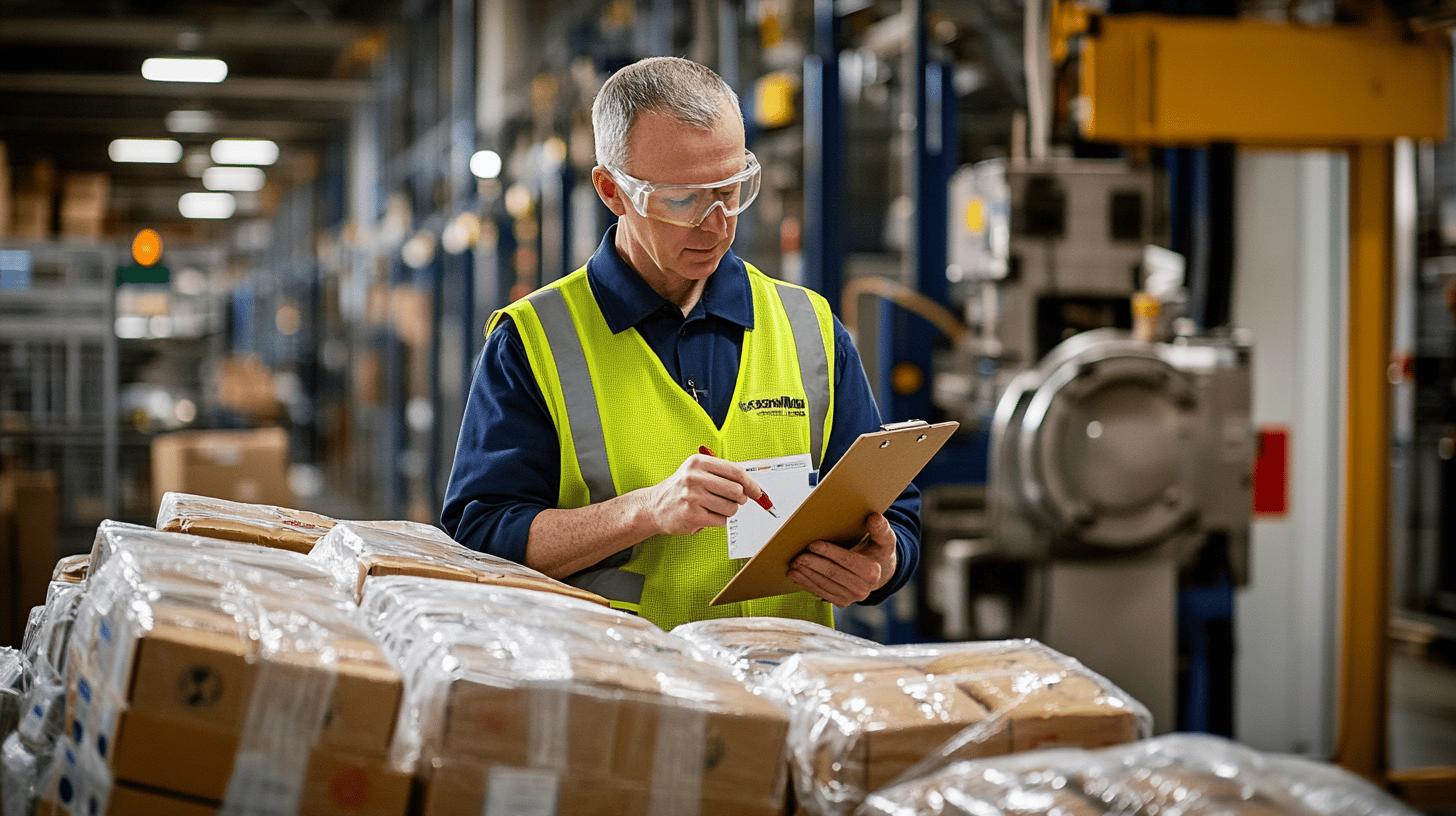
Compliance Solutions
7 Essential COSHH Risk Assessment Tips for Local Government
Unlock crucial insights with Q-Hub's seven essential tips for COSHH risk assessments tailored for local government officials. Delve into expert strategies to enhance safety, effectively manage hazardous substances, and ensure compliance—propelling your operations toward excellence.

Ewan Cohen
8
mins
7 Essential COSHH Risk Assessment Tips for Local Government
Local Government Officials face the critical task of conducting thorough risk assessments for COSHH compliance. It's a process that's both crucial and, let's face it, sometimes a bit daunting. But fear not! We've got your back with these seven game-changing tips. Oh, and before we dive in, let's talk about that five-step hazard evaluation process. It's like the cousin of COSHH risk assessment, you know? Both are about identifying dangers and keeping people safe. But while one's all about fire, the other's focused on those pesky hazardous substances. Anyway, let's get cracking with our list, shall we?1. Identify and Address Potential Hazards Effectively
Right, so first things first. You've got to spot those hazards, right? I mean, you can't manage what you don't know about. It's like playing hide and seek with chemicals, dusts, and all sorts of nasty stuff. But here's the thing - it's not just about the obvious stuff with warning labels. Oh no, no, no. You've got to think about the sneaky ones too. You know, like the dust from sanding or those fumes from welding. They're hazards too, even if they're not sitting pretty in a labeled bottle.| Hazard Type | Examples |
|---|---|
| Chemicals | Cleaning products, pesticides |
| Dusts | Wood dust, silica dust |
| Fumes | Welding fumes, vehicle exhaust |
| Biological Agents | Bacteria, viruses from waste handling |
2. Protect Key Groups from Harmful Exposure
Now, once you've got your hazards sorted, it's time to think about who might be getting up close and personal with them. And I don't just mean your staff, though they're obviously important. You've got to consider everyone - contractors, maintenance workers, even the public. It's like casting a really wide safety net. And here's the kicker - it's not just about who, but how. How are these people getting exposed? Is it through breathing it in? Touching it? Accidentally swallowing it? (Yuck, I know, but it happens!) You've got to consider all the angles.| Group Exposed | Potential Exposure Routes |
|---|---|
| Cleaning Staff | Skin contact, inhalation of cleaning products |
| Maintenance Workers | Inhalation of dusts, fumes from machinery |
| Public | Skin contact with chemicals in public areas |
3. Evaluate and Prioritize Risk Management
Alright, now we're getting to the nitty-gritty. You've identified the hazards, you know who's at risk. Now what? Well, now you've got to figure out just how risky each of these hazards actually is. It's like playing a really high-stakes game of 'would you rather', except it's 'which is worse'. You've got to think about how often people are exposed, for how long, and what controls you've already got in place. And then, you've got to figure out what else you need to do to keep everyone safe. It's a bit of a juggling act, but you've got this!| Step | Description |
|---|---|
| Identify Hazards | Determine substances and processes that release hazards |
| Determine Exposure | Identify who is exposed and how |
| Evaluate Risks | Assess the risks and determine control measures |
| Control Risks | Implement control measures to prevent or reduce exposure |
4. Implement Robust Control Measures for Safety
Now we're talking! This is where the rubber meets the road. You've identified the risks, now it's time to do something about them. And I'm not just talking about slapping on a pair of gloves and calling it a day. Oh no, we're going for the full monty here. First off, can you get rid of the hazardous substance altogether? That's always the best option. If not, can you replace it with something safer? No? Alright, then we're looking at containment, ventilation, all that good stuff. And yes, personal protective equipment too, but that's your last line of defense, not your first!| Measure | Description |
|---|---|
| Elimination | Replace hazardous substances with safer alternatives |
| Containment | Use closed systems to minimize release of substances |
| LEV | Use ventilation systems to extract dust, fume, mist, gases |
| PPE | Provide appropriate personal protective equipment |
| Systems of Work | Restrict access, plan storage and disposal |
5. Enhance Worker Knowledge through Training
Right, so you've got all these fancy control measures in place. But they're about as useful as a chocolate teapot if your workers don't know how to use them properly. That's where training comes in. And I'm not talking about a quick "here's how you put on a mask" demo. I'm talking comprehensive, engaging training that really sticks. Your workers need to understand the hazards they're dealing with, how to use the control measures properly, and what to do if something goes wrong. It's like giving them a superpower - the power of knowledge! And trust me, that's the best kind of power when it comes to staying safe.| Element | Description |
|---|---|
| Hazard Awareness | Inform workers about the hazards and risks |
| Control Measures | Train workers on using controls and PPE |
| Emergency Procedures | Educate workers on what to do in case of accidents or spills |
| Health Surveillance | Inform workers about health surveillance results |
6. Document and Review Assessments Regularly
Now, I know what you're thinking. "Paperwork? Really?" But hear me out. Documenting your risk assessments isn't just about ticking boxes. It's about creating a living, breathing record of your safety measures. And let's be honest, it's also about covering your backside if something goes wrong. But here's the thing - it's not enough to just write it down and forget about it. You've got to keep it up to date. Things change, new processes come in, old ones go out. Your risk assessment needs to keep up. It's like updating your phone - you wouldn't still be using iOS 1, would you?| Trigger | Description |
|---|---|
| Changes in Staff | New employees or changes in roles |
| Changes in Processes | New or modified work processes |
| Changes in Substances | Introduction of new substances or equipment |
| Worker Feedback | Queries or concerns raised by workers |
7. Ensure Compliance with Ongoing Monitoring
Last but definitely not least, we've got monitoring. This is where you make sure all those fancy control measures you put in place are actually doing their job. It's like being a safety detective - you're always on the lookout for clues that something might not be quite right. This means checking exposure levels, doing health surveillance, and having procedures in place for when things go wrong. Because let's face it, sometimes they do. And when they do, you want to be ready. It's not about being paranoid, it's about being prepared.| Responsibility | Description |
|---|---|
| Exposure Management | Provide PPE and manage exposure levels |
| Control Measures | Implement and maintain control measures |
| Instruction and Training | Provide training on working with hazardous substances |
| Procedures | Have protocols for accidents and emergencies |
| Surveillance | Monitor exposure and conduct health surveillance |

A supported 30 day trial

Bespoke onboaring support

30 day money back guarantee






